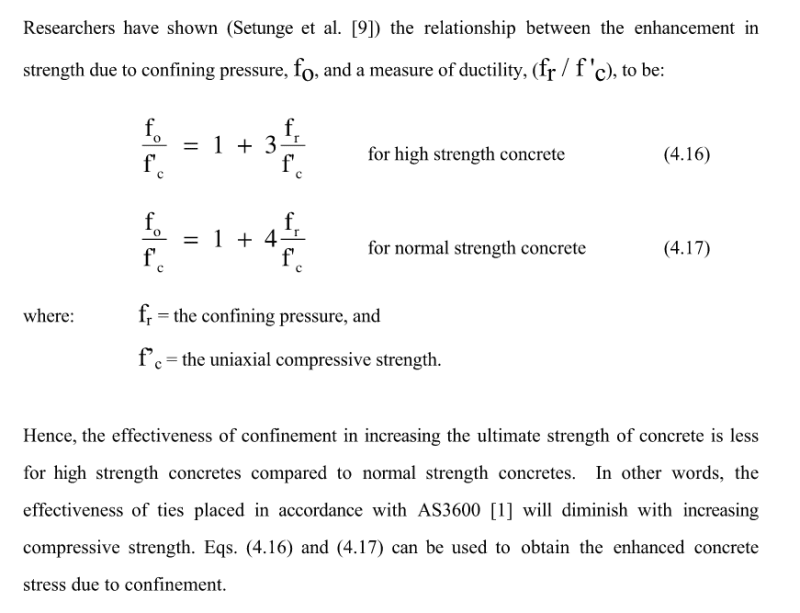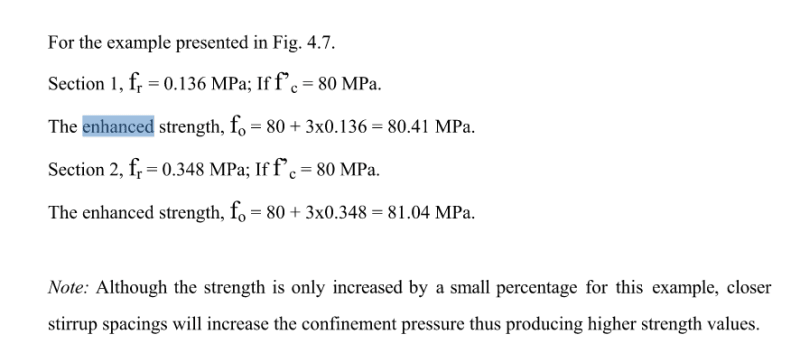Just Some Nerd
Structural
Hi all, had a couple of questions regarding this clause. I'm early in my career and don't yet always grasp the intent behind the wording in the code (though having read past discussions on this forum, maybe not that uncommon?)
First off, when assessing the joint using the effective concrete strength are we looking solely at the vertical force transmitted through the slab i.e. without consideration of any sort of moment (mainly the minimum) that we would be considering for the column itself? The clause itself only ever refers to the axial transmission but I have a hard time justifying to myself we should be ignoring a moment that the columns themselves must consider.
Secondly, Note 1 at the end of this clause states that confining reinforcement may be used to increase the effective strength of the concrete, and the commentary suggests doing the same. What sort of methods/resources would you use to calculate the increase in effective strength for a certain amount of confinement provided? Calculating a confinement pressure is simple enough given the equations given in Clause 10.7.3, but I am unfamiliar with how one would determine what increase in effective strength arises from this confinement.
First off, when assessing the joint using the effective concrete strength are we looking solely at the vertical force transmitted through the slab i.e. without consideration of any sort of moment (mainly the minimum) that we would be considering for the column itself? The clause itself only ever refers to the axial transmission but I have a hard time justifying to myself we should be ignoring a moment that the columns themselves must consider.
Secondly, Note 1 at the end of this clause states that confining reinforcement may be used to increase the effective strength of the concrete, and the commentary suggests doing the same. What sort of methods/resources would you use to calculate the increase in effective strength for a certain amount of confinement provided? Calculating a confinement pressure is simple enough given the equations given in Clause 10.7.3, but I am unfamiliar with how one would determine what increase in effective strength arises from this confinement.


